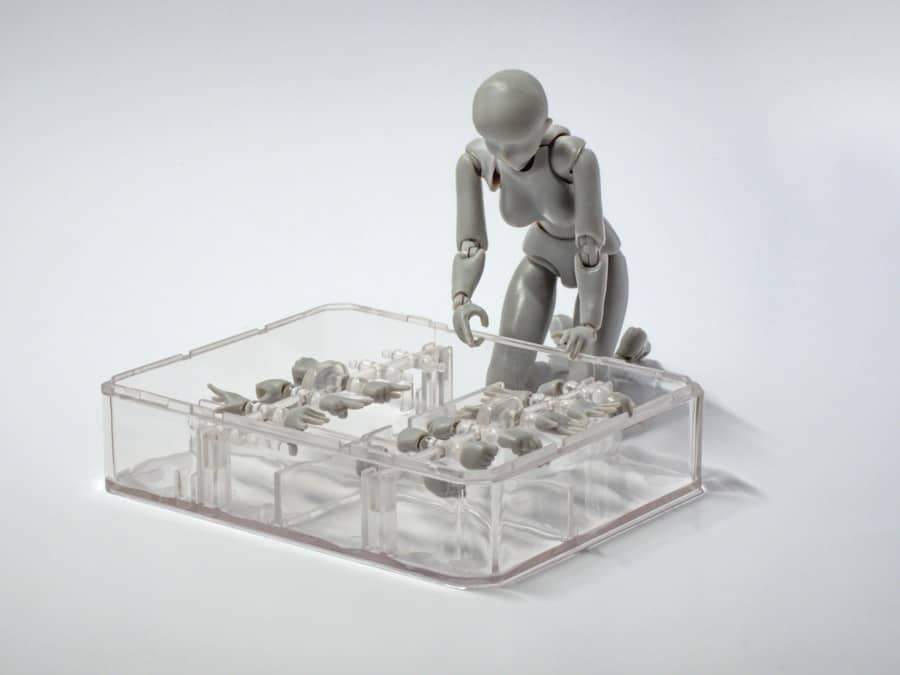Collaborative robots, often referred to as cobots, represent a significant evolution in the field of robotics and automation. Unlike traditional industrial robots, which are typically designed to operate in isolation from human workers due to safety concerns, collaborative robots are engineered to work alongside humans in shared environments. This innovative approach allows for a more flexible and efficient integration of robotic systems into various workflows.
Cobots are equipped with advanced sensors, machine learning capabilities, and user-friendly interfaces that enable them to adapt to dynamic work conditions and interact safely with human operators. The rise of collaborative robots is largely driven by advancements in technology, including artificial intelligence, computer vision, and sensor technology. These developments have made it possible for cobots to perform a wide range of tasks, from simple repetitive actions to more complex operations that require a degree of dexterity and decision-making.
As small businesses increasingly seek ways to enhance productivity and reduce operational costs, the adoption of collaborative robots has become an attractive option. The ability of cobots to augment human labor rather than replace it opens up new possibilities for small enterprises looking to innovate and remain competitive in a rapidly changing market.
Key Takeaways
- Collaborative robots, or cobots, are designed to work alongside humans in a shared workspace, offering flexibility and safety in small business environments.
- Small businesses can benefit from collaborative robots by increasing productivity, improving quality, reducing costs, and enhancing worker safety.
- Current applications of collaborative robots in small businesses include assembly, packaging, material handling, quality inspection, and machine tending.
- Challenges and limitations of implementing collaborative robots in small businesses include high initial costs, complex integration, and potential job displacement concerns.
- Future trends in collaborative robots for small businesses include advancements in artificial intelligence, machine learning, and human-robot collaboration, leading to even greater efficiency and flexibility.
Benefits of Collaborative Robots for Small Businesses
One of the most compelling benefits of collaborative robots for small businesses is their ability to enhance productivity without the need for extensive capital investment. Traditional automation solutions often require significant upfront costs for equipment, installation, and training. In contrast, cobots are typically more affordable and easier to deploy.
Many cobots are designed with plug-and-play functionality, allowing small businesses to integrate them into existing workflows with minimal disruption. This ease of use means that even companies with limited technical expertise can harness the power of automation. Moreover, collaborative robots can significantly improve the quality of work performed in small businesses.
By taking over repetitive and mundane tasks, cobots free up human workers to focus on more complex and value-added activities. For instance, in a manufacturing setting, a cobot might handle the assembly of components while human workers concentrate on quality control or product design. This not only enhances job satisfaction among employees but also leads to better overall outcomes for the business.
The precision and consistency offered by cobots can reduce errors and defects, ultimately resulting in higher-quality products and services.
Current Applications of Collaborative Robots in Small Businesses

The versatility of collaborative robots allows them to be employed across various industries and applications within small businesses. In manufacturing, cobots are commonly used for tasks such as assembly, packaging, and material handling. For example, a small electronics manufacturer might utilize a cobot to assist with the assembly of circuit boards, where precision is critical.
The cobot can work alongside human operators, ensuring that components are placed accurately while also speeding up the overall assembly process. In the retail sector, collaborative robots are making their mark by enhancing customer service and inventory management. Some small retailers have begun using cobots for tasks such as restocking shelves or assisting customers in finding products.
These robots can navigate store aisles autonomously while providing information about product availability or promotions through interactive displays. This not only improves the shopping experience for customers but also allows staff to focus on more personalized service.
Challenges and Limitations of Implementing Collaborative Robots in Small Businesses
Despite the numerous advantages that collaborative robots offer, small businesses face several challenges when considering their implementation. One significant hurdle is the initial investment required for purchasing and integrating cobots into existing operations.
Another challenge lies in the perception and acceptance of collaborative robots among employees. Some workers may fear that the introduction of automation will lead to job displacement or reduced job security. It is crucial for small business owners to address these concerns through transparent communication and by emphasizing the role of cobots as tools that enhance human capabilities rather than replace them.
Providing training opportunities that allow employees to work alongside cobots can also help foster a culture of collaboration and innovation within the workplace.
Future Trends in Collaborative Robots for Small Businesses
As technology continues to advance, several trends are emerging that will shape the future of collaborative robots in small businesses. One notable trend is the increasing integration of artificial intelligence (AI) into cobot systems. AI-powered cobots will be able to learn from their environments and adapt their behaviors based on real-time data, making them even more efficient and capable of handling complex tasks autonomously.
This evolution will enable small businesses to leverage cobots for a broader range of applications. Another trend is the growing emphasis on customization and modularity in cobot design. Manufacturers are recognizing that small businesses often have unique needs that require tailored solutions.
As a result, we can expect to see more modular cobot systems that allow businesses to easily swap out components or reconfigure their robots for different tasks without extensive downtime or reprogramming. This flexibility will make it easier for small enterprises to scale their automation efforts as they grow.
Considerations for Small Businesses When Adopting Collaborative Robots

When contemplating the adoption of collaborative robots, small businesses must consider several key factors to ensure successful implementation. First and foremost is the assessment of specific operational needs and goals. Understanding which tasks could benefit most from automation will help businesses select the right type of cobot for their requirements.
Conducting a thorough analysis of workflows can identify bottlenecks or inefficiencies that cobots could address effectively. Additionally, small businesses should prioritize safety when integrating collaborative robots into their operations. While cobots are designed with safety features that allow them to work alongside humans, it is essential to establish clear protocols for their use.
This includes training employees on how to interact safely with cobots and implementing safety measures such as emergency stop buttons or safety barriers where necessary. Ensuring compliance with industry regulations regarding robotics will also be crucial in mitigating risks associated with automation.
Case Studies of Small Businesses Successfully Using Collaborative Robots
Several small businesses have successfully integrated collaborative robots into their operations, showcasing the potential benefits of this technology. One notable example is a small bakery that adopted a cobot for dough mixing and portioning tasks. By automating these labor-intensive processes, the bakery was able to increase production capacity while maintaining consistent quality in its products.
The cobot worked alongside bakers, allowing them to focus on creative aspects such as recipe development and customer engagement. Another case study involves a small automotive parts manufacturer that implemented a collaborative robot for assembly line tasks. The cobot was programmed to handle repetitive tasks such as screwing components together while human workers managed quality control checks and troubleshooting.
This collaboration not only improved efficiency but also reduced worker fatigue associated with monotonous tasks. The manufacturer reported a significant increase in output without compromising product quality.
The Potential Impact of Collaborative Robots on Small Businesses
The integration of collaborative robots into small businesses holds immense potential for transforming operations across various sectors. By enhancing productivity, improving product quality, and allowing human workers to focus on higher-value tasks, cobots can play a pivotal role in driving growth and innovation within smaller enterprises. As technology continues to evolve, the capabilities of collaborative robots will expand further, making them an increasingly viable option for businesses looking to stay competitive in an ever-changing landscape.
While challenges remain in terms of cost, employee acceptance, and safety considerations, proactive planning and strategic implementation can help small businesses navigate these hurdles effectively. As demonstrated by successful case studies, the benefits of adopting collaborative robots far outweigh the challenges when approached thoughtfully. The future promises exciting developments in this field, paving the way for small businesses to harness the power of automation while fostering a collaborative work environment that empowers both humans and machines alike.
In exploring the potential of collaborative robots in small businesses, it’s essential to consider the broader technological landscape that supports innovation and efficiency. A related article that complements this discussion is How One Founder Realized the Potential of Sustainable Energy. This article delves into the transformative impact of sustainable energy solutions, which, much like collaborative robots, offer small businesses opportunities to enhance productivity and reduce operational costs. By integrating advanced technologies and sustainable practices, small businesses can position themselves at the forefront of industry advancements, ensuring long-term growth and competitiveness.
FAQs
What are collaborative robots?
Collaborative robots, also known as cobots, are robots designed to work alongside humans in a shared workspace. They are specifically built to be safe and easy to program, allowing for close collaboration with human workers.
How are collaborative robots used in small businesses?
In small businesses, collaborative robots are used to automate repetitive tasks such as assembly, packaging, and quality control. They can also assist with tasks that are too dangerous or strenuous for human workers.
What are the benefits of using collaborative robots in small businesses?
Some benefits of using collaborative robots in small businesses include increased productivity, improved product quality, and the ability to reallocate human workers to more complex or creative tasks. They also have a smaller footprint and are more affordable than traditional industrial robots.
What are the challenges of implementing collaborative robots in small businesses?
Challenges of implementing collaborative robots in small businesses include the initial cost of investment, the need for specialized training for programming and maintenance, and the potential resistance from workers who fear job displacement.
What is the future outlook for collaborative robots in small businesses?
The future of collaborative robots in small businesses looks promising, with advancements in technology making them more affordable, easier to use, and safer to work alongside humans. As automation becomes more prevalent, collaborative robots are expected to play a significant role in improving efficiency and competitiveness for small businesses.

